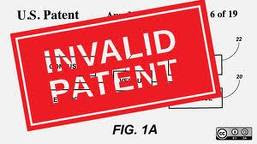Basics Of US Patent Law
United States has the most expansive patent subject matter in the world. US Patent Office has granted patents to living organism, computer software, business methods, new alphabets and countless.
Article 1 Section 1 Clause 8 of the US Constitution empowers the congress to promote the progress of science and useful arts, by securing for limited times to authors and inventors the exclusive right to their respective writings and discoveries. In furtherance of the power granted by the constitution, the US Congress enacted the first patent act in the year 1790. Though the act was amended several times, the most important amendment came about in the year 1952, when congress passed a new patent act codified under Title 35 of the United States Code. Though a few changes were made in 1986, 1996 and 1999, most provisions of the 1952 Act are still in effect.
The US Patent Law is based on the utilitarian reasoning, which is to promote the progress of science and useful arts in general public interest. An inventor gives an invention to the public and gets exclusive rights over it for a limited period of time. By granting exclusive rights to inventors for a limited period of time, the patent law provides incentive to invent, invest, design around and disclose which in turn encourages progress of science and technology.
Requirements for Patentability
To be eligible for a patent, an invention should satisfy the requirements of Patentable subject matter (Sec. 101),
a) Usefulness (Sec. 101)
b) Novelty (Sec. 102)
c) Non-obviousness (Sec. 103)
d) Specification (Sec. 112).
Usefulness - An invention would be eligible for a patent grant only if it is useful (35 USC Sec. 101). The utility of the invention should be current, substantial and credible. Speculative or future uses are not eligible for the patent. But with regard to genetic inventions, showing of future use is generally allowed. Inventions, which have immoral uses, are not accepted to be useful.
Novelty - Novelty means new. An invention in order to be patentable should be new in the light of that exists at the time of conception of the invention. Section 102 gives a non-exhaustive list of circumstance that denies an invention of its newness.
Non-obviousness - An invention to be patentable should not be obvious or known at the time of invention. An invention is obvious, if a single prior art reference or a combination of prior art references as a whole, make the invention obvious to a person with ordinary skill in the art to which the invention belongs. The invention should be obvious at the time of conception of the invention and not at the time of contention of obviousness.
As per the Section 103 - Obviousness of an invention will be decided by determining the scope of the prior art, by finding out the differences between the prior art and the claimed invention and by ascertaining the level of ordinary skill in the art. Secondary Indicia like commercial success, unexpected results, copying, praise of experts, etc. could also be considered for making an obviousness determination.
Specification - An inventor must file a patent application containing a specification (35 USC Sec. 112). The specification should contain written description of the invention and of the manner and process of making and using it, in such full, clear, concise and exact terms, so as to enable a person with ordinary skill in the art to make and use the invention. The specification should also describe the best mode of carrying out the invention. The written description may contain drawings where and when required to clearly describe the invention. The specification should conclude with one or more claims particularly pointing out and definitely claiming the subject matter of the invention. The claims define the metes and bounds of the invention claimed by the inventor. The inventor gets rights only over what is defined in the claims.
The basic requirement for patentability is that the invention should fall within the scope of patentable subject matter as defined under Section 101. (35 USC Sec. 101). As per section 101, any new and useful invention or discovery, which is a process, machine, manufacture or composition of matter is patentable. It also includes any new and useful improvements made to an existing invention. An invention generally falls under more than one category.
The courts have construed the terms process, machine, manufacture and compositions of matter very broadly. In Diamond v. Chakrabarty, the United States Supreme Court while upholding the patentability of an oil-eating bacterium stated that everything under the sun made by man is patentable.
Not eligible for Patentability
The statute does not expressly bar any subject matter from patentability, the Courts have held physical phenomenon, abstract ideas and products of nature to be outside the scope of patentability.
An invention is not considered new or novel if the same were on sale for more than a year before the filing date of patent application. Selling the invention for testing deprived it of the novelty. Even making an offer to sell or making a contract of sale for the future is fatal to novelty of the invention and it shall not patented.
An invention is not new if it is known or used by anyone in the United States or printed or published in a foreign country. The use should be publicly accessible use and not secret use.
An invention can not be patented, if the inventor had abandoned the invention to the public. Taking an invention, which has been dedicated to the public out of the public domain, is against the basic objective of patent law.














Hello...
The law of patents is a legal framework that establishes a patent system which supports and encourages technological innovation and promotes economic development. I hope that it eventually proves easier for you the reader to follow the postings and comments.
Trademark Basics In Japan
Post a Comment